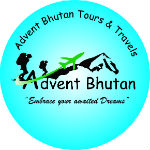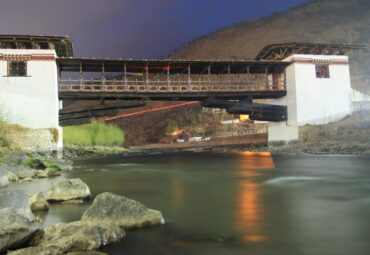11 days 10 nights gasa hot spring trek
- Bhutan Trekking Tours
- 11 days - 10 nights
- 0 Review
- Unlimited
- Unlimited
- 4 star and 5 star accommodations and meals (optional)
- Airfares (optional)
- All entrance fees to museums and monuments
- All internal taxes and fees
- All meals ( breakfast
- All meals ( breakfast, lunch, dinner & light refreshments) at 3 star hotels/tourist standard restaurants
- All necessary trekking equipments like sleeping tents
- All necessary trekking equipments like sleeping tents, dinning tents, kitchen tents, toilet tents, sleeping mats, sleeping bags
- All transfers and excursions by private vehicles
- Bhutan Government Royalty of US$ 65/person/night
- Bhutanese Tourist Visa fee of US$40/person (must be paid in advance with tour cost)
- charge
- Charges for porters ponies/mules for transportation on trekking trail
- dinner & light refreshments) at 3 star hotels/tourist standard restaurants
- dinning tents
- English speaking tour guide service
- Fees for Trekking cooks/ all meals on trekking
- FIT surcharges of US$40/person/night for a single traveler and US$30/person/night for a double
- kitchen tents
- lunch
- Mineral drinking water
- Other personal expenses like overseas calls, laundry,etc
- Single room supplement of US$40/room/night during low season and US$ 50/room/night during high season (optional)
- sleeping bags
- sleeping mats
- toilet tents
- Travel inssurance (recommended)
- Twin sharing hotel rooms at 3 star hotels
11 days 10 nights gasa hot spring trek
11 days 10 nights Gasa hot spring trek
This trek leads you to the hot spring at Gasa. Most of the Bhutanese visit Gasa hot spring, as it has medicinal values and is believed to help cure illness. The trek trail leads through a beautiful forest of sub-tropical trees and alpine vegetation. You will get an opportunity to see the National Animal-Takin grazing in the bushes.
Day 01: Arrive Paro and Paro Sightseeing
Fly into Paro international airport by Drukair flight. After immigration and customs formalities, you will be received by the representative of Advent Bhutan Tours & Travels and driven to your hotel. After checking into your hotel and lunch visit the following places:
Visit the National Museum, housed in the Ta Dzong (watchtower). Ta Dzong- National Museum of Bhutan is a cultural museum in the town of Paro established in 1968. Built on top of the hill above Rinpung Dzong, it was originally used to defend Rinpung Dzong and the Paro valley during times of war.
Here, an intriguing collection of finest samples of Bhutanese art, including masterpieces of bronze statues, paintings, suitable galleries are elegantly displayed on scientific lines, which collectively will lead to the wonderful introduction to the rich culture and heritage of the Kingdom.
Make a visit to a farmhouse which gives an insight of authentic lifestyle of a Bhutanese farming family.
In the evening,stroll around the Paro Town.
Dinner & overnight in Paro.
Day 02: Paro Excursion to Taktsang (3hours 30 minutes Walk)
Drive to Satsam Chorten and then hike to the Taktshang, the Tiger’s Nest. Normally it takes about three and half hours to complete the hike but might take longer depending on your fitness. Paro Taktsang, also known as the Tiger’s Nest, is an important Buddhist sacred site which clings to the rock face, 900 metres above the valley floor.To the rear of the Taktsang lies Senge Samdup cave where Guru Rinpoche is said to have meditated for three years, three months, three weeks, three days and three hours in the 8th century. Today, Paro Taktsang is popularly known for the thirteen Taktsang or “tiger lair” caves in which he meditated. It is believed that Padmasambhava (Guru Rinpoche) flew to Taktshang from Tibet on the back of a tigress from Khenpajong. This place was consecrated to tame the Tiger demon.
Refreshment will be served at View Point Cafeteria en route.After visiting the monastery, descend back to viewpoint cafeteria for lunch and then further descend downhill to the base. Then drive back to the hotel.
In the evening, relax or stroll down around the Paro Town
Day 03: Paro – Thimphu (2Hours-55Km)
After breakfast, travel to Thimphu, the capital city of Bhutan, an hourly drive journey.The road runs down through the Paro valley, characterised by the narrow-gauged with high, rocky cliffs on the left. You can stop on the way to visit the magnificent Tamchhog Lhakhang, the hereditary place of worship for Bhutan’s iron bridge builder. Then passage through Chuzom, is the entrance to the Thimphu valley, the Confluence of Paro and Thimphu rivers. The road passes along the Simtokha Dzong, (Dzong means ‘castle-monastery’) – It is the oldest Dzong built in 1629 by Zhabdrug Ngawang Namgyal (who unified Bhutan). The Dzong functions as a monastic and as well as administrative centre. Today, it is one of the pre-eminent Dzongkha language (National Language) learning institutes.
On arrival at Thimphu check into your hotel. After brief rest and refreshment, your sightseeing includes a visit to the following places:
The Tashichho Dzong, It is a Buddhist monastery and fortress of the glorious religion on the northern edge of the city of Thimphu, built in 1641 by Zhabdrung Ngawang Namgyel. It was rebuilt into the present structure by the late King, His Majesty Jigme Dorji Wangchuck in the year 1962-1969. It houses the secretariat building, the throne room and the office of the king, and the central monk body.
The Takin Zoo – which houses the national animal, Takin (The national animal of Bhutan). The reason for declaring Takin as the national animal is attributed to a legend of the animal’s creation (goat’s head and cattle’s body) in Bhutan in the 15th century by Lama Drukpa Kunley. Drive further to Sangaygang to get a bird’s eye view of the beautiful Thimphu valley.
The Handicrafts Emporium and local crafts shops, aligned neatly below Norzin Lam, opposite to Nehru Wangchuk Cultural Centre, to witness Bhutanese fine traditional arts. Here you can buy hand-woven textiles, thangka paintings, masks, ceramics, slate and wood carvings, jewellery, and other eye-catching items made from local materials.
In the evening you may stroll around Thimphu town.
overnight in Thimphu
Day 04: Thimphu– Punakha(3Hours-76Km)-Damji
In the morning, travel to Punakha via the Dochula pass. The Dochula Pass (3,088m/10,130ft) is a mountain pass, with the breathtaking view of 108 memorial stupas known as “Druk Wangyal Chortens” built under the initiative of Royal Queen Ashi Dorji Wangmo Wangchuk( the eldest Queen Mother), built in honour of the fourth Druk Gyalpo (head of the state of Bhutan), Jigme Singye Wangchuck.
Then travel onto to Punakha, the old capital of Bhutan and presently the winter residence of the central monk body. It is also known as Pungtang Dewa chhenbi Phodrang (meaning “the palace of great happiness or bliss). It is the second oldest and largest dzong built in 1637 by Zhabdrung Ngawang Namgyal (Unifier of Bhutan) to serve as the religious and administrative seat of the region. Further, you will drive through a spectacular villages of Toebisa, Metsena and Tashithang till you reach Damji. Overnight in Camp.
Day 05: Damji – Gasa
The trek trail leads you through pleasing pine forests and village hamlets. You will enjoy the leisurely walk accompanied by the calls of the wild birds and may get to see Takin on the way. As you reach your destination -the Gasa hot springs, take a brief rest with a hot cups of tea/ coffee. Overnight in camp.
Day 06: Halt at Gasa hot spring
Today, soak into the Gasa hot springs. This will help relax your body and help you replenish your energy. You will love it.
Overnight in camp.
Day 07: Gasa hot spring & Sightseeing
After the breakfast, trek to the Gasa town which takes about an hour from the campsite. on arrival, visit the Gasa Dzong, also known as Tashi Tongmön Dzong- It was built in the 17th century by Tenzin Drukdra (the second Druk Desi) over the site of a meditation place established by Drubthob Terkungpa in the 13th century. The Dzong was built in order to defend against the attacks from the north. .Overnight in Camp.
Day 08: Tsachu – Damji – Punakha
Trek down to Damji where Advent Bhutan transport will meet you and drive you to Punakha, the old capital of Bhutan and presently the winter residence of the central monk body.
Overnight in Punakha
Day 09: Punakha Sightseeing – Thimphu(3Hours-70Km)
After the breakfast, we will visit the Punakha Dzong, also known as Pungtang Dewa chhenbi Phodrang (meaning “the palace of great happiness or bliss). It is the second oldest and largest dzong built in 1637 by Zhabdrung Ngawang Namgyal (Unifier of Bhutan) to serve as the religious and administrative seat of the region. The Punakha Dzong majestically sprawl between the Pho Chu (Male River) and the Mo Chu (Female River). Then drive to Metshina Village and take 15 minutes walk through the rice fields to the Devine Madman’s Monastery-Chhimi Lhakhang, famously known for its fertility shrine, where it is believed, one can receive special fertility blessings. Late afternoon, drive back to Thimphu.
Overnight in Thimphu
Day 10: Thimphu–Paro (2Hours-55Km)
After breakfast, Visit the following places:
The National Library– which houses an enormous collection of ancient Buddhist texts and manuscripts, was established in 1967 under the patronage of Her Majesty the Queen Mother Ashi Phuntso Choden for the purpose of “preservation and promotion of the rich cultural and religious heritage” of Bhutan.
The folk heritage museum– The museum was launched on 28 July 2001 under the initiative of founder Queen Mother Ashi Dorji Wangmo. The outdoor museum gives an insight into rural life.The museum exhibit diverse materials associated with the Bhutanese culture and way of life.The exhibition comprises of rural households’ artifacts, equipment, objects and tools.
The School of Thangka Painting-The traditional arts is known as zorigchusum (zo = the ability to make; rig = science or craft; chusum = thirteen). These traditional crafts depict hundreds of years of knowledge and ability that has been passed down through generations.The students undergo a six-year course to consummate learning the 13 traditional arts and crafts of Bhutan.
The Institute of traditional medicine– The Institute of traditional medicine sprawled on a hilltop with the Traditional Arts Center and National Library just below, was established in 1978. This institute collects medicinal plants from far-flung areas of the Bhutanese Himalaya, such as Lingzhi, Laya and Lunana, conducts research on Bhutan’s medicinal plants to identify the ingredients to help develop new health product and then dispense pills, tablets, ointments and medicinal teas to regional health-care units around the country.
After the lunch, travel to Paro.
Overnight in Paro.
Day 11: Paro – Departure
Advent Bhutan Tours & Travels (your local Bhutan travel agent) will see you off at the Paro International Airport for your onward destinations.
End of the Tour
Advent Bhutan Tours and Travels
- Advent Bhutan Tours and Travels, Thimphu, Bhutan




